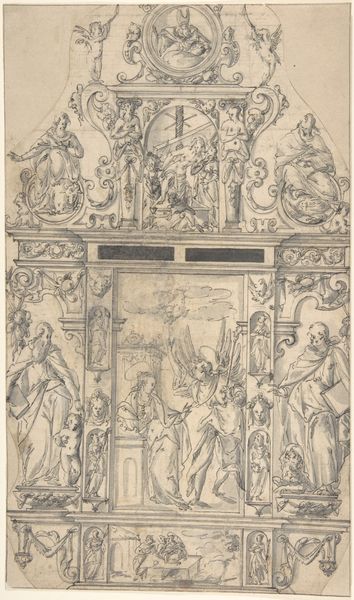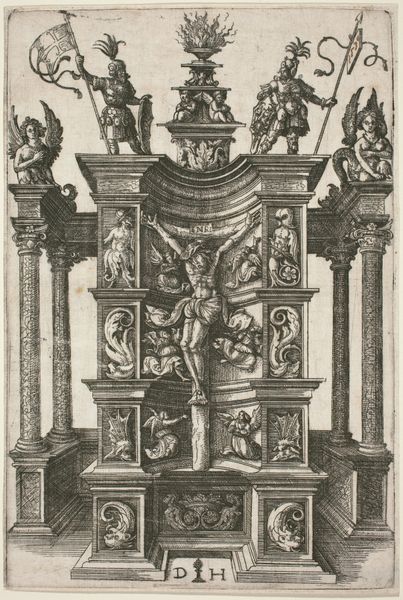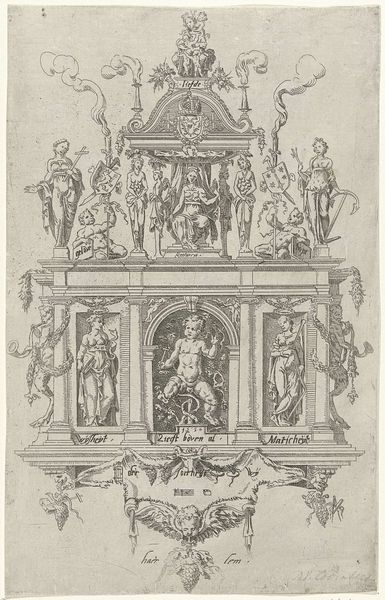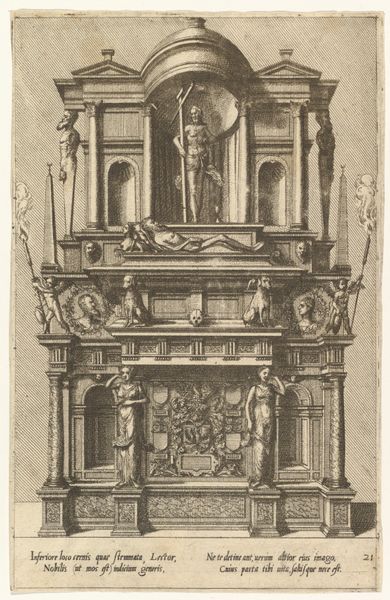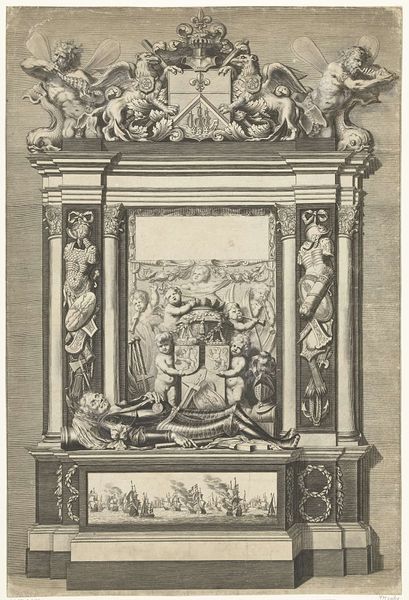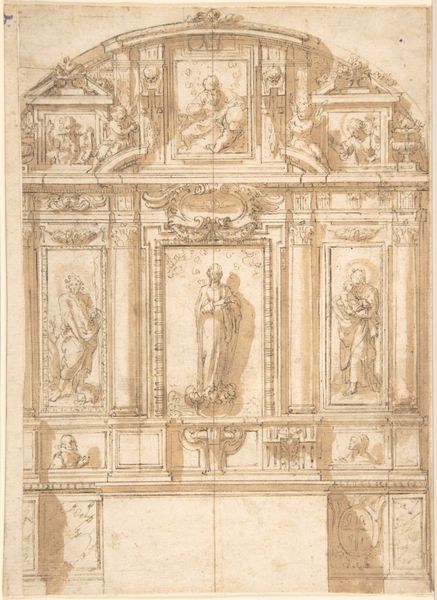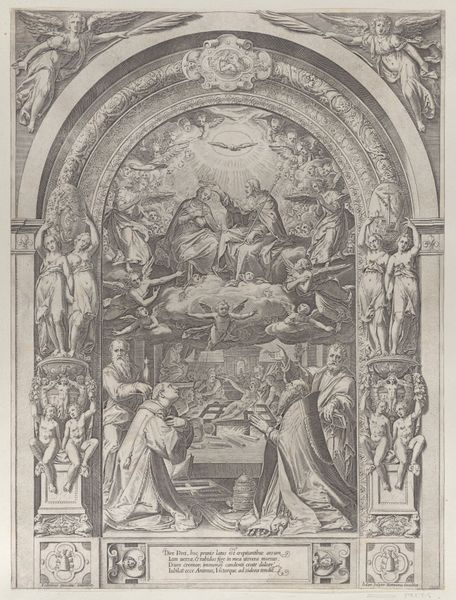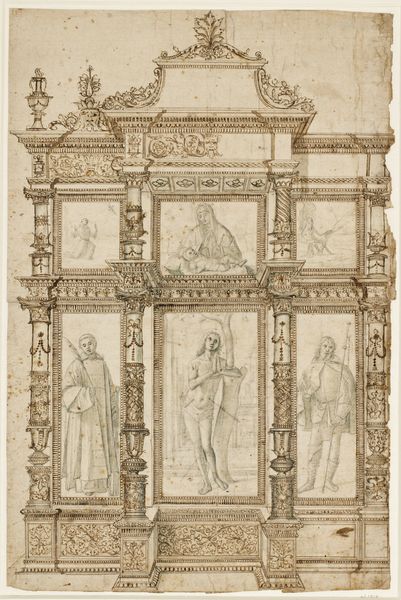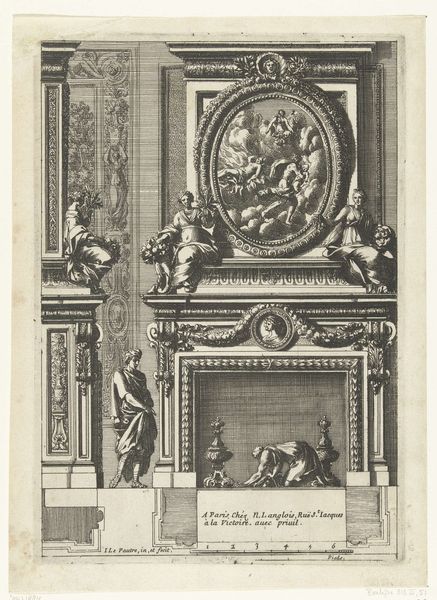
Dimensions: 18 1/8 x 12 5/8 in. (46 x 32.1 cm)
Copyright: Public Domain
Editor: So, this is Philips Galle's "Christ on the Cross between Two Thieves," made sometime between 1545 and 1612. It's an engraving, and quite intricate. It's impossible to ignore the visual weight and the feeling of dramatic tension. What do you see in this piece beyond the immediate religious scene? Curator: What immediately strikes me is the carefully constructed stage upon which this drama unfolds. Galle isn't just presenting a religious scene; he's deliberately framing it, literally and figuratively. Look at the architectural elements, the sculpted figures flanking the central image. How does that layering impact our reading of the crucifixion itself? Editor: It’s like he's trying to give it a certain…authority? Elevate it somehow through its presentation? Curator: Exactly. And it's worth considering what kind of authority Galle is invoking. The figures surrounding the main scene seem to pull from classical traditions. The choice to frame the crucifixion within that context invites us to think about the complex relationship between the rise of Christianity and earlier belief systems. In some ways, the framing also anticipates a much later, critical function. How is the message altered when seen through the conventions or social assumptions of different eras? What are we meant to see, and what is actively obscured by Galle’s choices? Editor: That's really interesting. So, the architecture almost acts as a filter for how we are supposed to understand the event depicted? Curator: Precisely. The frame becomes a lens, shaping our understanding of faith, power, and the narratives we construct around them. And who gets to construct them. Considering that lens changes everything about our understanding of Christ on the Cross. What does that recognition invite us to think about concerning Galle's broader message, even concerning religion today? Editor: I see what you mean. It really puts the piece into a wider context, makes it much more relevant to questions we are grappling with now. Curator: Agreed, and by doing that, Galle challenges us to question not just what we see, but how and why we see it.
Comments
No comments
Be the first to comment and join the conversation on the ultimate creative platform.
